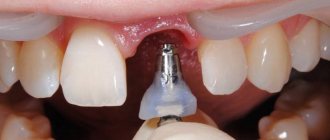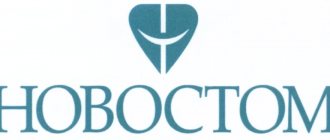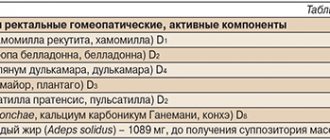When and in what order do baby teeth emerge?
For most children, the teething pattern looks like this:
- At 6-8 months, two central lower incisors appear.
- At 8-9 months, the upper central incisors.
- At 9-12 months, the upper lateral incisors erupt.
- At 11-12 months, the lower lateral incisors.
- At 12-15 months, the upper and lower molars.
- At 16-18 months, the upper canines
- At 18-20 months, the lower canines.
- Chewing teeth erupt at 2-3 years of age.
During normal development, baby teeth erupt in each area within 2-10 days, and the most unpleasant symptoms usually appear within 2-5 days. All 20 baby teeth erupt by age 3.
What to do if teeth are cut chaotically and behind schedule?
There is no need to sound the alarm right away. In some children, teething begins at 3 months, and in some at 10, and this is not a pathology, but a feature of the body. The same applies to the violation of the order of appearance of the incisors.
But if there is a delay of 3-5 months, you need to go for a consultation with a pediatrician or dentist.
Recommendations for use
Suppositories must be used exactly as prescribed by the pediatrician; the dosage must be observed and the drug must be used correctly.
How to use candles:
- The person administering the product must wash their hands. To do this, it is better to use an antibacterial agent or laundry soap. This is necessary so that the infection does not enter the child’s colon.
- If the child is under 1 year old, then he is placed on his back and his legs are held in his hands. When the baby is more than a year old, he is placed on his side and his legs are bent towards his stomach.
- Before administering the product , you must remove the packaging and warm it in your hands. Lubricate the child's anus with cream.
- Spread your butt and insert the product into the anus. Close the child’s buttocks and wait a while. This is necessary so that the drug does not come out.
- The baby should lie down for a while so that the product is better absorbed and absorbed.
What are the common teething symptoms and what do you recommend?
- Profuse salivation.
One of the most obvious signs is when drool is literally flowing in a stream. Moreover, the symptom may appear a couple of months before the start of eruption.
Saliva should be carefully wiped away as it appears damp towel or napkin so as not to damage the skin. It is best to use wipes that contain xylitol - it prevents the growth of bacteria and the appearance of rashes on the skin.
- A strong desire to put everything in the mouth and chew.
Chewing helps your baby relieve the itching. The main thing is to hide objects that he could accidentally swallow or injure himself.
Lifehack. Bend your index finger and gently insert it into your baby's mouth. If he starts squeezing it with his gums, it means teeth are definitely coming out. If it just sucks, then it’s something else.
- Skin rashes.
A small rash on the cheeks or chin may occur due to skin contact with saliva. On irritated skin you just need to apply baby moisturizer.
ATTENTION! If the rash around the mouth appears without other symptoms of teething, it is better to show the child to the pediatrician!
- The baby cannot suckle normally.
At the peak of feeding, he abandons her and begins to act up. And sometimes he can bite with his gums. In such a situation, there is no need to force the child to eat. Even if he misses 2-3 feedings, nothing bad will happen. When he gets really hungry, he will still take the breast or bottle and eat. If you have no appetite for more than 24 hours, call a doctor.
- Redness and swelling of the gums.
It begins 2-5 days before teeth appear, goes away on its own, you don’t need to do anything.
You can also notice a blue bubble on the gum. This is a eruption hematoma. It occurs as a result of the destruction of small vessels in the gums during tooth eruption. It does not require any specific treatment. It will soon resolve on its own.
Analogues of the drug Viferon
Viferon has its own structural and non-structural analogues. Structural analogues include Grippferon, Kipferon. They also contain human recombinant interferon alpha-2b. Grippferon differs only in the release form (drops, spray). Kipferon is produced in candles.
Is it possible to combine Viferon and Kipferon? The combined use of drugs is not recommended, since they have the same active ingredient. With simultaneous use, an overdose or an allergic reaction is possible.
Non-structural analogues include:
- Anaferon - contains antibodies to human interferon gamma; less effective, allowed from 1 month;
- Arbidol - indicated from 3 years of age, for example, for coronavirus and influenza, has a less pronounced clinical effect in relation to acute respiratory viral infections, and is not used at all for bacterial infections, since it has a targeted effect on viral particles;
- Kagocel is an interferon inducer, affects the production of its own interferons, and is not indicated for infants and children under 3 years of age.
Viferon is the most effective medicine among all antiviral drugs. It has proven itself in the treatment of influenza, coronavirus and other acute respiratory viral infections in adults and children. Due to the lack of toxicity and undesirable effects, it can be used in pregnant women and newborns. The medicine is ideal for the prevention of viral diseases and is used as part of the general treatment of bacterial infections.
What are the complications, and when to see a doctor?
| Symptom | Teeth are being cut, there is no need to go to the pediatrician | The disease develops, contact your pediatrician |
| Cough | A coughing attack begins due to excess salivation. The cough is wet and infrequent. | The cough gets worse, does not go away, does not allow the baby to sleep, and prevents him from eating. Doesn't stop for more than 2 days. Breathe heavily. |
| Nasal discharge | Nasal discharge is transparent and watery and disappears by the 4th day. | The runny nose does not go away for the 4th day. Lots of yellow or green discharge. |
| Heat | The temperature does not exceed 38 °C and lasts no more than 2-3 days. Rapidly decreases under the influence of antipyretics. | Fever above 38.5 °C for more than 2 days. Signs of a cold appear (severe cough and runny nose). |
| Loose stools | Lasts less than 72 hours. | Lasts more than 72 hours. |
| Changes in the oral cavity | The gums become swollen and red. | The oral mucosa is covered with white plaque or ulcers. |
Dosage
Candles will help your child get rid of pain and fever.
Homeopathic medicines can be used for 14 days. However, even homeopathy should be prescribed by a doctor, not an inexperienced parent.
In some cases, pediatricians prescribe the listed suppositories to children whose age has not yet reached 3 months. The treatment of each baby requires an individual approach, but such an important decision should be made by a specialist in the field of pediatrics whether to prescribe suppositories to a newborn or not.
In cases where a 2-month-old baby is teething and severe pain brings agony, the doctor may prescribe a fourth of the suppository every 6-7 hours . This will relieve pain and improve your well-being. Older children are prescribed 1 suppository every 6-7 hours.
In the case when the child’s body temperature reaches 39-40 degrees and does not decrease for a long period of time, and the pain causes irritability and moodiness, the pediatrician may recommend putting suppositories every 30 minutes for a couple of hours. Next, a break must be observed (about 12-14 hours).
Important! You can put no more than 4 candles per day!
What can be done to help a child with severe itching and pain?
- Carry your baby in your arms more often, play with him and distract him.
- Give chilled water in a bottle, cool fruit puree or kefir. The main thing is that the liquid is not too cold, otherwise the baby will catch a cold.
- Massage the gums with a special silicone brush (see picture above) or you can gently use your clean finger.
- Buy your baby a teether and let's chew.
Such devices are made from plastic, rubber, silicone, wood, or a combination of different materials. The surface of the toys should be elastic and uneven to make it easier for the child to scratch the gums. A cooled teether relieves itching better, so it can be placed in the refrigerator to cool for 10-15 minutes. But don't chill it in the freezer!
- Do not use gum gels with lidocaine and benzocaine.
The child has a lot of saliva in the mouth, so gels are not effective during this period. The child swallows most of the gel.
What should you not do when your baby is teething?
- Strongly touch the child’s gums with your fingers, press on them and pick them out. This can increase pain or cause infection.
- Conduct vaccination, because immune system is weakened during this period .
- Without supervision, allow your child to chew any hard foods that could cause choking.
- Give homeopathic remedies. Not only will they not help the child, but they can cause serious harm.
The eruption of baby teeth is not a problem, but a natural process for a child’s body. But if you are not sure about something, do not hesitate to ask specialists. If you have any questions, write to us on Instagram.
Symptoms of spasms in children
As mentioned above, the most common cause of spasms in children is pathology of the gastrointestinal tract.
Below we consider the main symptoms of gastrointestinal diseases accompanied by spasms in children:
- Intestinal colic. This pathology is characterized by sudden and severe bouts of crying in the baby. Colic appears during the neonatal period. Intestinal colic is associated with immaturity of the nervous regulation of intestinal activity and increased gas formation against the background of intestinal dysbiosis.
- Functional diarrhea and constipation. Spasms in these pathologies are not the main symptom. They can only appear periodically. The diseases are functional disorders of young children, which are accompanied by diarrhea or constipation, respectively. At the same time, an in-depth examination does not reveal any other pathology.
- Acetonemic syndrome. Often occurs in children, especially during early childhood. As a rule, the cause of its development is an error in diet. Other reasons include ARVI, harmless excitement (birthdays, etc.), stress. In this case, the pain is no longer caused by spasm, but by irritation of the mucous membrane with ketone bodies (those substances that cause acetone syndrome). Characteristic symptoms of this disease are the smell of acetone in the exhaled air, nausea, vomiting, lethargy, and drowsiness.
- Biliary dyskinesia, inflammation of the gallbladder . Dyskinesia is a functional disorder of the gallbladder and bile ducts, which may be accompanied by spasms in these organs. As a result, children experience pain, often in the right hypochondrium. In addition, children feel heaviness in the right hypochondrium, bitterness in the mouth, and yellowness of the skin and eyes appears.
- Gastritis and peptic ulcer. The causes are often Helicobacter pylori. Children experience: nausea, often vomiting, abdominal pain, heartburn, tendency to constipation, bad breath.
With gastritis, children often experience nausea, vomiting, and abdominal pain.
- Malabsorption syndrome . Among the pathologies in this group, it is worth highlighting celiac disease and lactase deficiency. Celiac disease is a gluten intolerance that is accompanied by a variety of symptoms, including abdominal pain. Lactase deficiency is an intolerance to dairy products, after consuming which occurs bloating, abdominal pain and diarrhea.
- Inflammatory bowel diseases. These include Crohn's disease and ulcerative colitis. It is most often characterized by the appearance of blood in the stool and abdominal pain. Subsequently, symptoms intensify and other signs appear.
- Intestinal infections. Acute intestinal infections are manifested by fever, often vomiting and diarrhea, which is characterized by persistent progression. As a rule, it can develop after eating bad foods or after contact with a sick person.
In addition to pathology of the gastrointestinal tract, other diseases can lead to the development of spasms and pain. Urinary tract infections are quite common, especially in girls. This is due to the short and wide urethra, through which pathogenic bacteria can quickly penetrate. The development of cystitis is accompanied by the appearance of symptoms such as pain when urinating, pain, frequent urination, burning and pain in the urethra and bladder. Teenage girls often develop dysmenorrhea, which is characterized by pain and heaviness in the lower abdomen.










